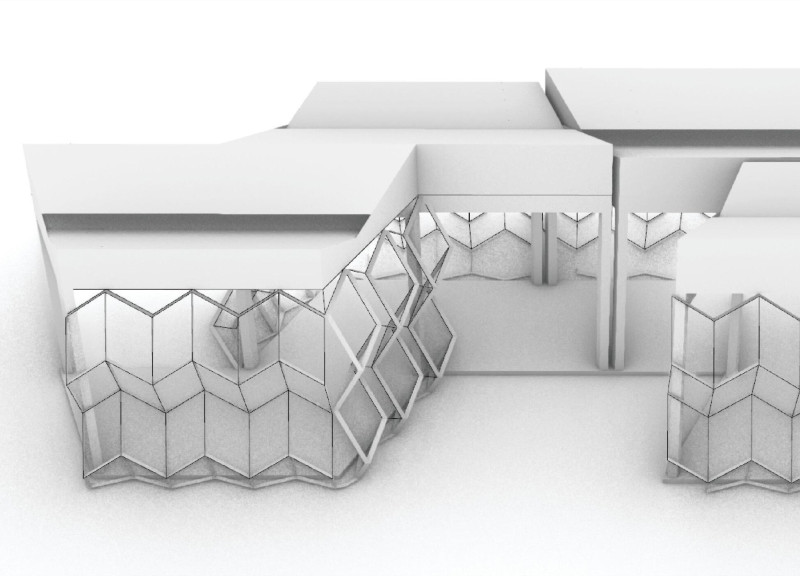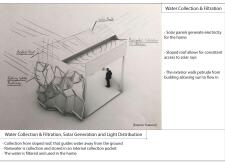5 key facts about this project
The project employs a dynamic frame that allows walls to fold in multiple orientations, thus modifying the façade as needed. This design flexibility is not only practical but promotes user engagement with the surrounding environment. The building’s seasonal adaptability enhances occupant comfort through effective thermal performance, resulting from thicker insulation in colder months and increased transparency in warmer seasons.
Unique Design Approaches
One distinguishing feature of this architecture is its reliance on a folding wall system inspired by natural forms. This approach not only creates functional variability but also emphasizes an ecological connection. The use of the Miura fold technique exemplifies efficiency in material use and design, enabling significant transformations without compromising structural integrity.
Furthermore, the integrative use of materials such as glass and moss enhances both aesthetic appeal and functionality. Glass panels optimize natural light and provide a seamless connection to the exterior. Additionally, the inclusion of moss as a natural insulation material aligns with sustainable design practices, promoting energy efficiency while creating a pleasant indoor atmosphere.
Another key element is the incorporation of rainwater collection and filtration systems. By facilitating the harvesting of rainwater directly from the roof, the project promotes self-sufficiency and resource conservation. This system exemplifies the architecture's functional sustainability, further reinforcing its commitment to environmentally responsible design.
Architectural Elements and Functions
Key components of the project include an angled roof designed to efficiently manage rainwater and folding walls that enhance ventilation and adaptability. Each element serves a practical function while maintaining a cohesive architectural language. The orientation and arrangement of these elements are carefully considered to foster a responsive relationship between the building and its environment.
The overall design encourages users to interact with the structure as it evolves through seasonal changes. By prioritizing flexibility, the project presents a viable model for future architectural solutions addressing increasing environmental unpredictability.
For further insights into the architecture behind the Fold Up, Down, and Replace project, interested readers are encouraged to explore architectural plans, architectural sections, and architectural designs. This deeper exploration will provide a more comprehensive understanding of the unique ideas that characterize this innovative project.
























